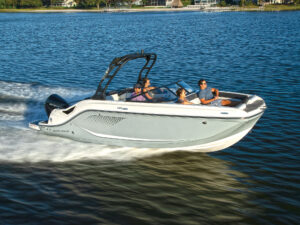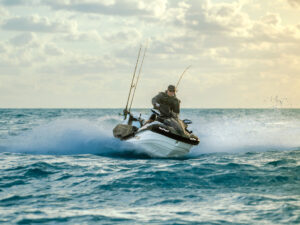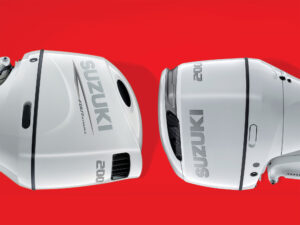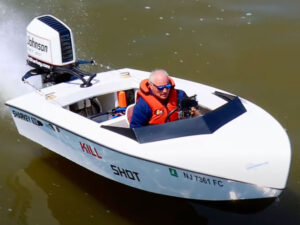Overview
Serious anglers have been fishing Blackfin for 50 years. But in the past five, the hard-edged fishing brand has wrapped itself in luxury accommodations, a performance ride, and a lustrous fit-and-finish like you might find on a hand-built sports car. Why shouldn’t you? The Blackfin 302DC is certainly hand-built and exhibits all the accoutrements that come from that kind of care.
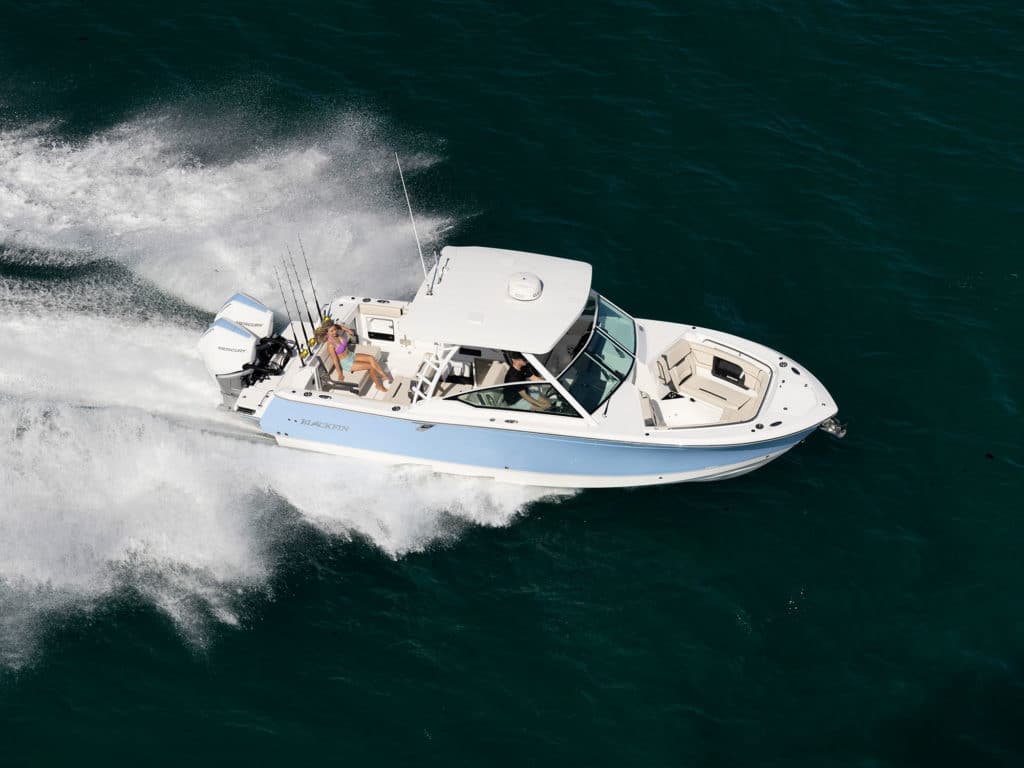
Performance comes from blending hull design and construction techniques. The running surface is a patented Michael Peters double-stepped hull with a shallow notch in the hull halfway up to the chines from the keel and beginning just behind the second step. This notch gives the hull superior control in turns. The sheer runs high to handle the rough seas serious anglers might encounter, keeping the crew safe and comfortable for the ride home. The 302DC’s performance also comes from a lamination schedule that capitalizes on a hybrid blend of E-glass with carbon fiber to increase strength. The hull layup begins only after the factory closes and the last speck of dust is filtered from the air. Molds are touched up one last time, and the gelcoat is sprayed in. The next morning, technicians add a skin coat to protect the gel from print through the structural lamination and, as a result, the boat comes off the line solid, sleek, and with a mirrorlike finish you can only expect from hand-built care.
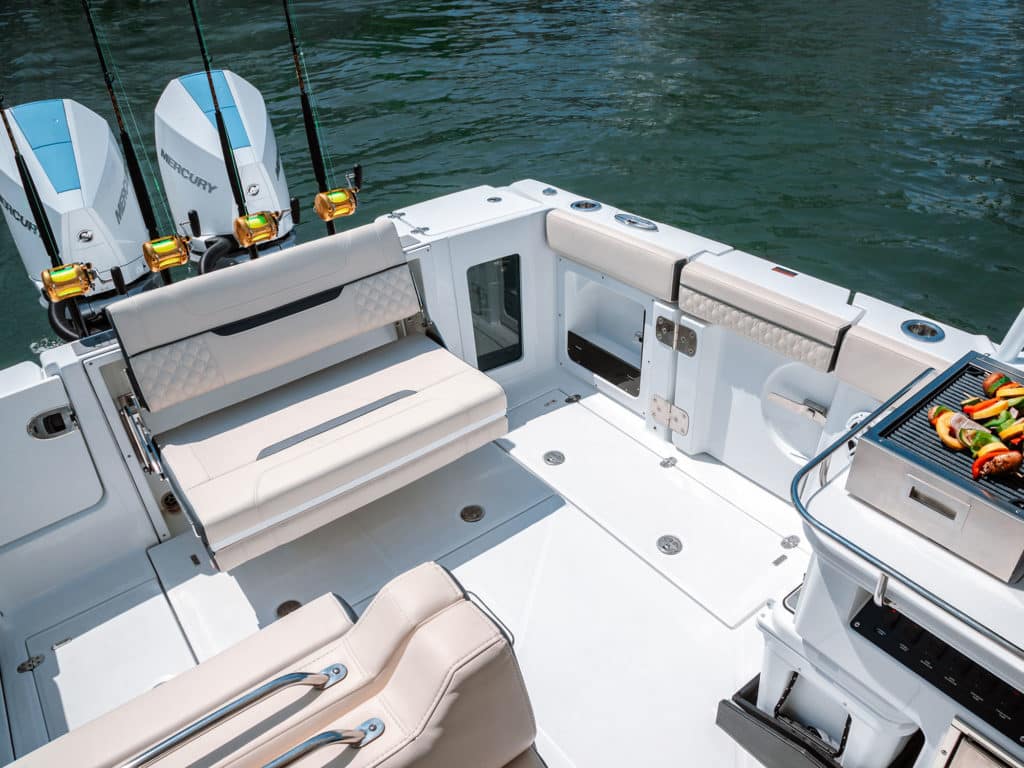
Engines
Dual 300 hp Mercury V-8s notched 55 mph on the speedo-meter and registered 1.4 mpg at 44 mph. In fact, the vessel is more economical at 44 than it is at 30 mph—a feature to be appreciated when conserving fuel and time for a long trip to the canyons, the Gulf Stream or oil rigs. In port, our tester docked sweetly with a combination of joystick steering and a bow thruster—features we appreciated in the narrow confines of the Sarasota Hyatt Marina.
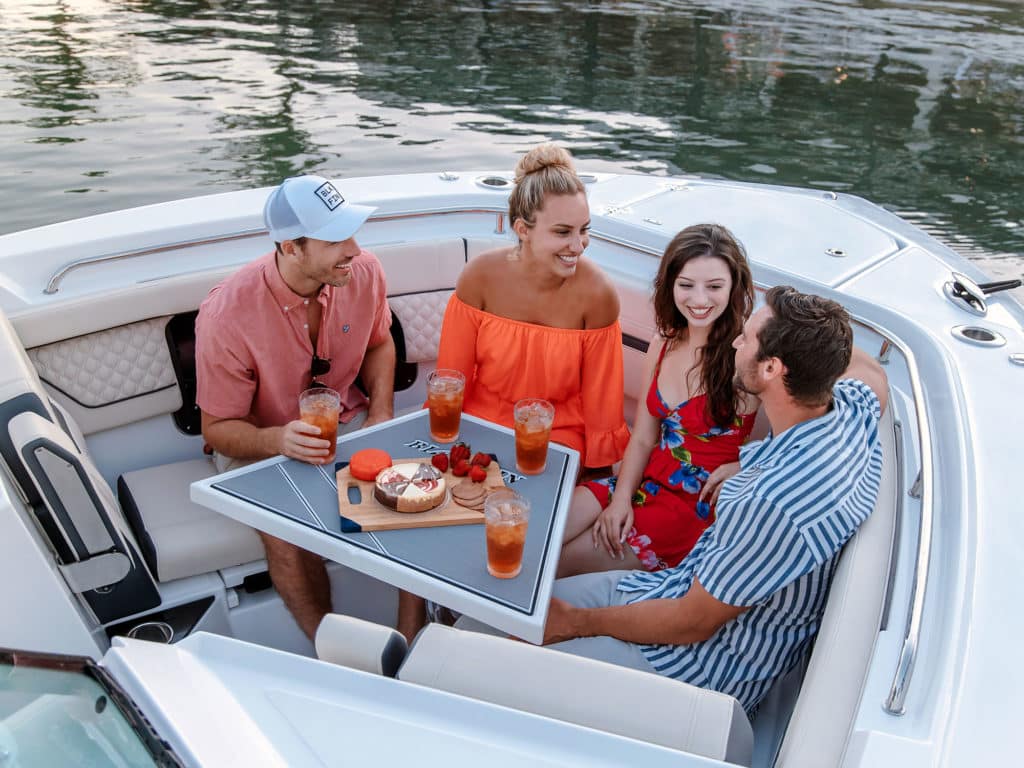
Interior and Accessories
No matter how good a lamination schedule is, what is bolted onto the hull is as important in a boat’s fit-and-finish as the hull and deck. Blackfin uses highly polished stainless-steel hinges. The same goes for durable, sleek but massive pull-up cleats for secure mooring. A pair at the bow, a pair at the transom, and a pair on the gunwales near the cockpit give ample options for secure mooring. The hatches are compression-molded with a gleaming inner surface and a crisp diamond-plate nonskid surface on the deck side.
Ultrafabrics, with a thick, supple color layer over a durable fabric weave, covers seats. It stretches over multidensity foam, with crisp seams stitched in, accent ribbing and diamond-tufted surfaces. At the helm, a wide double seat gives the captain space for a companion, and a comparable seat accommodates guests to port. At the transom, a pullout lounge converts an open deck with a wraparound bolster into a conversation area facing the convertible lounge starboard and a cockpit galley to port. Each seating position has a good balance between firm and soft to provide a comfortable ride, stand up to hard use, and look good for years.
The galley has a sink, an optional stow-away electric grill, an electric fridge, and one of two Yeti 45 coolers on deck that retract from the galley and starboard lounge. Dedicate both to refreshments or one for frozen bait to bolster the 30-gallon livewell.
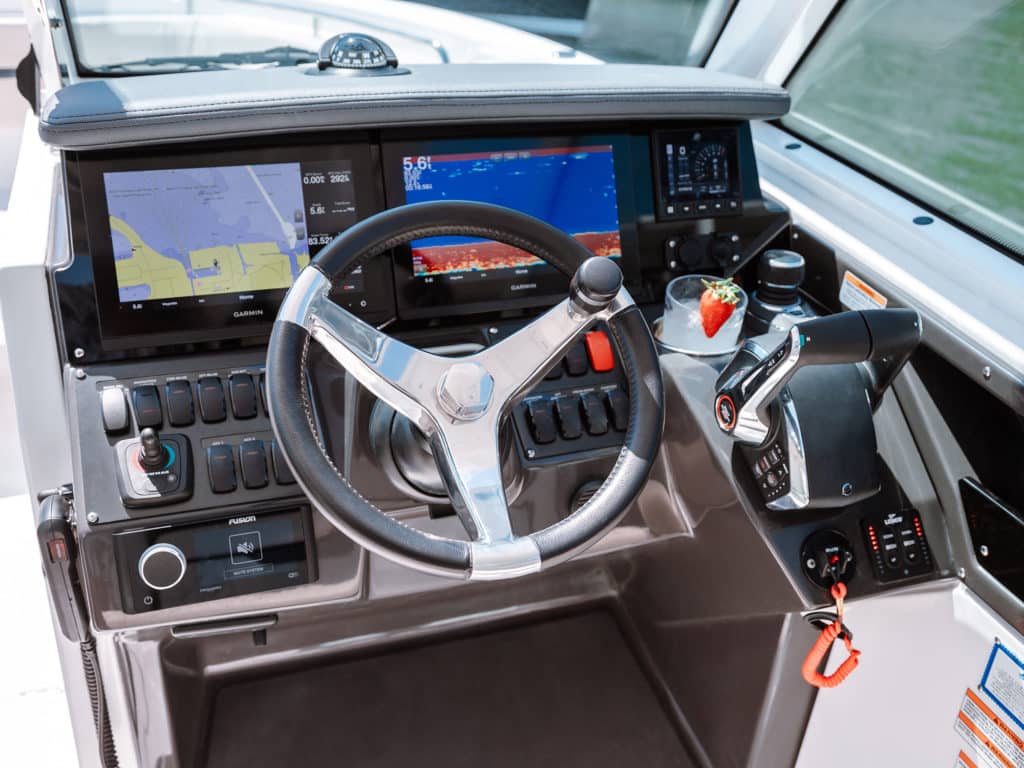
The livewell is powered by a 1,500 gph pump and has a sealed lid that allows overflow to run off the transom, ensuring the well is full to the rim so bait has a stable ride. Four shotgun rod holders and two Gemlux cup holders/rod holders ensure plenty of places for the sticks. Six more rocket launchers are in the hardtop too. For rigging bait, you could use the underside of the livewell lid as a cutting board, or go to the galley and flip the granite top insert to reveal a cutting board underneath. For bottomfishing, the forward seating can be removed and the deck filler installed to present a large casting deck complete with two combo rod holders. A portside boarding door and a transom door add both boarding and fish-landing options to the 302—a feature we did not find on an otherwise comparable boat.
Pursuit’s DC 295 (2023 price not available at press time) offers optional standards that we found on the Blackfin, such as a windlass, refrigerator, hardtop rod holders and an upgraded stereo to name a few, but it doesn’t offer a factory bow thruster or side boarding door. The DC 295 is powered nicely by dual Yamaha 300s, and its (optional) Helm Master EX electronic controls rival Merc’s in some ways and exceed them in others, such as the autopilot integration with Yamaha’s digital electric steering. When you approach your waypoint, Yamaha’s integrated, optional autopilot will slow down, stop on it, and hold there while you get your rods rigged.
In this complicated world, boaters are thinking, “If not now, when?” and increasingly jumping in. Blackfin simplifies the buy with an exhaustive list of standard features, including a windlass, bow thruster, hardtop and side boarding door. You just have to decide on the optional joystick.
How We Tested
- Engines: Twin Mercury 300 hp V-8
- Props: Enertia 14″ x 19″ 3-blade stainless steel
- Gear Ratio: 1.85:1 Fuel Load: 130 gal. Water on Board: 50 gal. Crew Weight: 600 lb.
High Points
- Carbon-fiber reinforced construction enhances rigidity and optimizes weight.
- Bow seating is deep, safe, and surrounded by thick upholstery and comfortable grab rails.
Low Points
- Some anglers may prefer more than 30 gallons of livewell capacity.
- Tackle storage is scant; the space is used to enhance galley and luxury features.
Pricing and Specs
| Price: | $392,620 (base with test power) |
| LOA: | 32’8″ (with engines) |
| Beam: | 10’0″ |
| Draft (max): | 2’9″ (engines down) |
| Displacement (approx.): | 10,500 lb. (with engines) |
| Transom Deadrise: | 23 degrees |
| Bridge Clearance: | 8’9″ |
| Max Cabin Headroom: | 4’7″ |
| Fuel Capacity: | 240 gal. |
| Max Horsepower: | 800 |
| Available Power: | Mercury outboards |
Speed, Efficiency, Operation
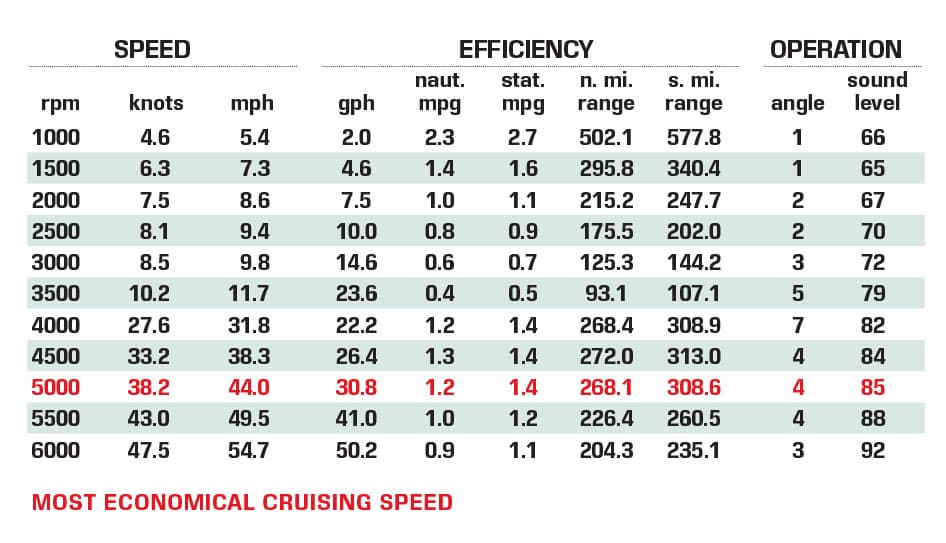
Blackfin Boats – Williston, Florida; 352-528-2628; blackfinboats.com

